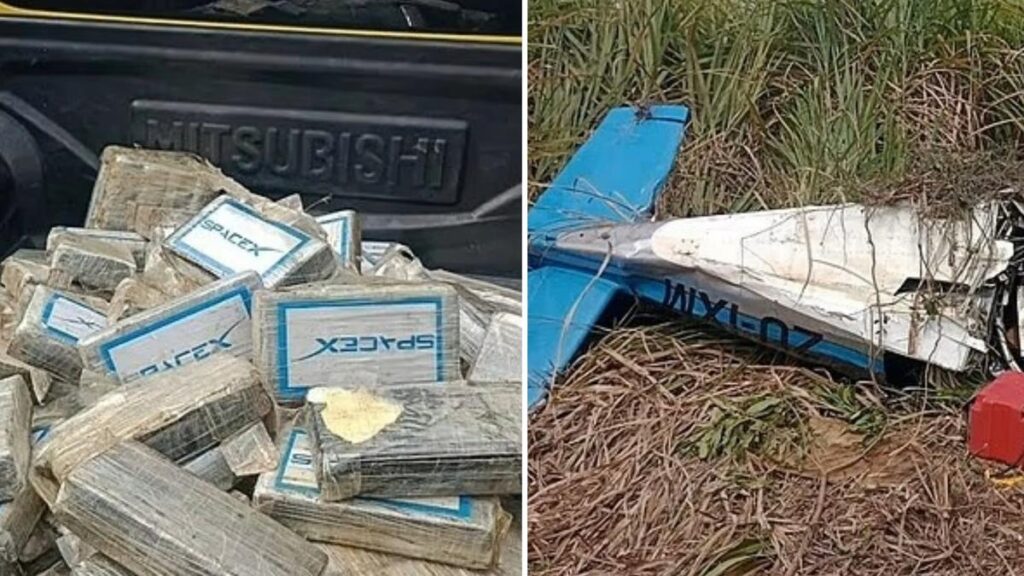
SPACEXDRUG
Authorities in Brazil have confirmed that an Australian pilot was found dead after a plane crash involving 200kg of SpaceX-branded cocaine. The wreckage of the light aircraft was discovered in a sugarcane field in Coruripe, located on the coast of the Alagoas region. The deceased pilot has been identified as 46-year-old Timothy J Clark.
Mr. Clark, whose identity was verified through documentation found at the scene, was piloting the aircraft when it crashed on Sunday at approximately 1:30 PM. The area is known as a significant international drug trafficking route, according to reports from local media outlet Gazeta.
Details of the Incident
The aircraft involved in the crash was registered in Zambia, though it is believed to have been stored in Brazil over the past two years. Notably, no flight details were logged with Brazilian authorities, leaving the intended destination of the journey unknown.
Images provided by the police depict the cocaine packaged into bricks, each wrapped with SpaceX branding. Tests confirmed the substance contained cocaine. The haul is estimated to have a street value of approximately $80 million in Australia, where cocaine prices rank among the highest globally.
Brazil’s Role in Global Drug Trafficking
Brazil plays a crucial role in the international cocaine distribution network. Although the country produces minimal amounts of the drug, it serves as a major transit point. A 2016 United Nations report highlighted Brazil as a frequent departure point for cocaine bound for African, Asian, and European markets, following Colombia.
Brazil is the second-largest consumer of cocaine worldwide, after the United States, partly due to its low price—sometimes as cheap as $5 per gram.
This situation is exacerbated by Brazil’s proximity to Colombia, Peru, and Bolivia, countries with loosely monitored borders, facilitating the flow of narcotics.
Implications and Ongoing Investigations
The discovery of SpaceX-branded cocaine raises questions about branding strategies used by drug traffickers to disguise or market their illegal goods. The use of such a recognizable brand could either be a tactic to mislead authorities or a method to appeal to a certain clientele.
Brazilian authorities are continuing their investigation into the crash, focusing on unraveling the network behind this operation. The involvement of an Australian pilot and a Zambian-registered plane adds layers of complexity to the case, suggesting an international dimension to the trafficking operation.
Meanwhile, the incident highlights the ongoing challenges faced by law enforcement agencies in combating drug trafficking, particularly in regions with porous borders and high levels of corruption.
Looking Forward
This case underscores the need for enhanced international cooperation in tackling drug trafficking. As authorities work to piece together the details of this operation, it serves as a stark reminder of the global nature of the drug trade and the sophisticated methods employed by traffickers.
As investigations continue, the international community will be watching closely to see how this case unfolds and what measures will be implemented to prevent similar incidents in the future.





